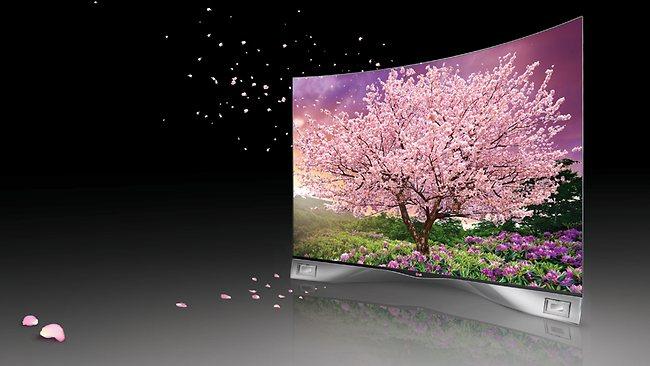4K TVs become more affordable with LG releasing 55, 65-inch versions locally
NEW 4K or ultra high definition TVs are becoming more affordable with LG locally releasing models costing not much more than HD.

NEW 4K or ultra high definition TVs are becoming more affordable with LG in Australia releasing models costing not much more than 1080p full HD versions.
The drop in price comes on the back of cut-price UHD TVs emerging overseas. A Seiko 50-inch TV in the US is reported to cost $US1500, while a TLC 50-inch UHD TV announced there last month costs $US1000.
New ultrahigh definition screens offer 4 times the resolution of 1080p, high definition screens – around the quality of what you experience in a public cinema.
In Australia this week LG, a premium brand in comparison to Seiko and TLC, has announced 55 and 65-inch UHD TVs flagged to come to market locally in the middle of this month.
While the 84-inch LG UHD TV released last year remains extremely expensive – currently $19,999 at Harvey Norman – 55 and 65-inch ones are looming as a highly competitive market with Samsung also announcing the same sized models a week ago, and Sony today flagging 55 and 65-inch models for Australia before year’s end.
In LG’s case, the 55-inch UHDTV costs only $1500 more than the South Korean manufacturer’s LED model of the same size -- $4999 versus $3499.
And ultra-high definition TVs are half the cost of the emerging new cool form factor –curved TVs that have the new OLED screens. These organic light-emitting diode displays operate differently to LCD and LED ones. OLED displays include a layer of organic semiconductor material that emits light in response to electric current.
In contrast to the $4999 cost of a 55-inch UHD TV, LG’s curved OLED TV of the same size will sell for $11,999 when it also hits the Australian market this month. OLED displays are generally much brighter screens and offer richer colours and pitch-black blacks. However the LG model’s resolution is 1080p high definition.
Marketing General Manager for LG Australia Lambro Skropidis told The Australian that LG was seeking to differentiate itself in the Australian market by offering high quality displays.
Its OLED screens contained while as well as red, green and blue “sub-pixels”, and in its new revised model, the base of the curved OLED screen included a transparent layer containing 5 speakers with an audio output power of 40 watts.
The response time of the OLED TV was 100 times faster than the corresponding LED/LCD TV, he said.
On UHD TVs, LG said it was selling about 100 units per month of its 84-inch model. Its research indicated that more consumers were willing to pay $4000 or more for a new set with 17 per cent of consumers regarding ultra high definition as an important feature, despite the low availability of UHD-specific content.
The 55-inch and 65-inch models have 8.3 million pixel resolution and a hidden sound bar that slides down from the back of the panel when switched on. LG says its UHD TV panels feature full backlighting rather than from the sides.
The HEVC (High Efficiency Video Coding) codec, which handles compressed ultrahigh definition content, comes built in. LG says HEVC offers around a 50 per cent reduction in file sizes that otherwise run to 50-60 Gigabytes for an UHD movie. While the 55-inch model costs $4999, the 65-inch version would retail for $7499.

